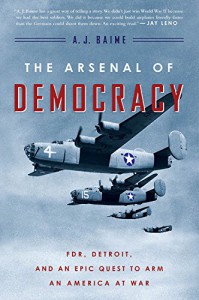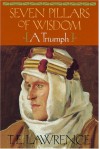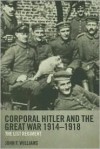Currently reading
A LOOK AT THE KEY ROLE PLAYED BY DETROIT AS "THE ARSENAL OF DEMOCRACY" IN THE SECOND WORLD WAR

Growing up in the Midwest U.S., a lot of what A.J. Baime wrote about the growth and changes experienced by Detroit during the Second World War, when it played a major role in terms of its industrial contributions to the Allied war effort, resonated very strongly with me.
Looking back over 70 years, we tend to take for granted the collaborative relationships between the federal government (as represented by President Roosevelt and the U.S. military) and industry in getting this country on a firm footing to meet the threat posed by the Axis Powers. Here the reader learns how it was that Ford Motor Company --- which prior to the Second World War, had but a brief experience with commercial aviation --- took on the enormous task (thanks to Edsel Ford, the son of Henry Ford the automobile pioneer and himself President of Ford Motor Company between 1919 and 1943) of building in record time a massive facility --- at Willow Run, MI near Detroit --- wherein they painstakingly developed the process of turning out B-24 heavy bombers in assembly line fashion. (Bear in mind that such a bold undertaking had never been done before in U.S. history. So, there was no certainty that Edsel Ford's plans for producing bomber planes on a massive scale in record time would succeed.) Figures like Charlie "Cast Iron" Sorensen, Ford's chief tool designing engineer William Pioch, and Charles Lindbergh loomed large in making Willow Run a resounding success story after a shaky start early in 1943. (At its peak, Willow Run managed to produce 1 B-24 Liberator an hour, eventually producing 80% of all B-24 Liberators which saw action in the war.)
Baime also provides the reader with an interesting short history of the Ford Motor Company and the complex --- and at times, fractious --- relationship between Henry and Edsel Ford. All in all, "The Arsenal of Democracy" offers a fascinating tale of how America galvanized its industries for the Second World War and helped bring about the decisive Allied victory over Hitler, Fascist Italy, and Imperial Japan.
 5
5













